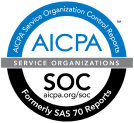The National Council on Compensation Insurance (NCCI) held their Annual Insights Symposium (AIS) from May 12-14 in Orlando, Florida, where industry thought leaders delivered exclusive workers’ comp insights to conference attendees.
The AIS Highlights Reports are now available, featuring recordings of each session and associated key takeaways. What follows are brief highlights from some of the many reports available.
This report provided an exclusive review of the workers compensation system. Key highlights include:
- Workers’ comp net written premiums decreased 3% in 2024
- The Calendar Year 2024 combined ratio for workers comp is 86%, a sign of underwriting profitability for the system
- Workers’ comp Accident Year 2024 combined ratio is 99%, with prior years continuing to experience downward reserve development
- NCCI estimates a redundant industry reserve position of $16B.
- Lost-time claim frequency declined by 5% in 2024, a faster pace of decline than the long-term average decline
- Severity grew in 2024 with increases of 6% for medical claim severity and 6% for indemnity claim severity
Industry-Specific Trends Uncovered
This report focused on industry-specific trends and how shifts in claims frequency may impact sectors differently in workers compensation. Key highlights include:
- While overall claim frequency has been in a decades-long decline, at an industry level, trends are very different
- The shift to remote work in 2020 led to a decline in claim frequency among office workers and remains low for those who have continued to work remotely
- Within the Leisure & Hospitality industry, claim frequency for restaurants declined in 2022 and 2023, while frequency for other subsectors has remained flat
- Despite the pandemic disruption, health care claim frequency (excluding COVID-19 claims) generally declined from 2015 to 2023, driven by a nearly 30% reduction in strain-related injuries
- Claim frequency in private education has risen, primarily driven by “struck or injured by” injuries, potentially resulting from workplace violence in the industry
The State of the Economy and Its Impact on Workers Compensation
This report provides an in-depth perspective on recent economic developments and their impact on workers compensation. Key highlights include:
- Economic uncertainty is elevated, recession probabilities are up
- Consumer spending is the key data point to watch
- The labor market is a lagging indicator for the economy
- The labor market is at risk near-term (recession) and long-term (labor supply)
- Tariffs will directly impact a small portion of workers comp prices
- Direct medical price impact is likely to be manageable
- Tariffs present a monetary policy challenge for the Fed’s dual mandate
- Long-term yields may stay elevated due to inflation and debt concerns
The Cost Conundrum: How Medical Utilization Shapes Future Costs
This report unraveled changes in medical utilization and associated costs, reviewing the potential impact on future experience. Key highlights include:
- Medical utilization in workers comp is a function of the mix of claims and corresponding medical conditions treated, the rate of major surgery per medical condition and where the surgery takes place, and the intensity of physical therapy
- One in eight injured workers underwent a major surgery. These claims make up more than half the utilization or cost of workers comp claims
- For Accident Years 2016 to 2022, trends reflected more severe medical conditions, offset by a decreased surgery rate and a shift in site of care that moderated the rising medical cost
- Utilization of physical medicine is up across all medical conditions, with and without major surgery
In this report, NCCI experts revealed the evolution of pain management in workers compensation and the implications on medical cost. Key highlights include:
- As of 2023, the cost of pain management accounts for about 30% of annual medical cost in workers comp
- Despite opioid use in workers comp declining nearly 75% since 2012, pain management cost per claim has been relatively flat. Changes in pain management have shifted the timing of services to earlier in the life of a claim, driven by:
- Reduced use of opioids
- Increased use of topicals
- Increased utilization of physical therapy
- Increased surgery prices
- These changes have varying impacts on individual claims based on the role each treatment plays for a given medical condition
- Future changes will depend on how new advancements fit into the pain management framework in workers compensation






